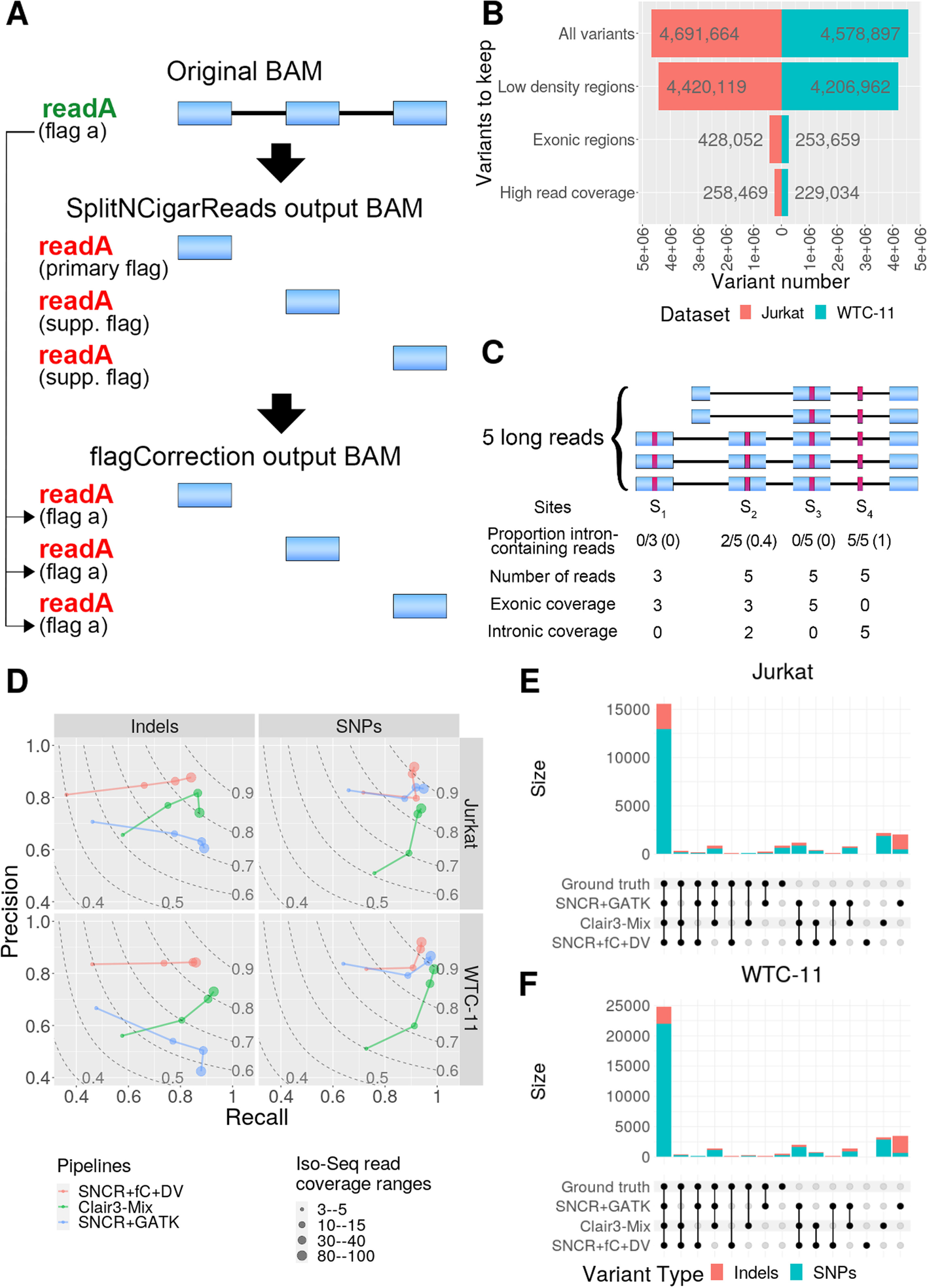Fig. 1

Alignment file transformation for optimized calling of genetic variants from lrRNA-seq data and variant calling performance across the best pipelines on PacBio Iso-Seq reference datasets. A Alignment file (BAM) transformations to make spliced lrRNA-seq alignments suitable for variant calling. First, GATK’s SNCR function is used to split the reads at Ns in their cigar string, such that exons become distinct reads. Second, the flagCorrection function attributes the flag of the original read to all corresponding fragment reads. B The number of genetic variants kept in the ground-truth (Illumina DNA-seq) variant call format (VCF) files (for Jurkat and WTC-11 datasets) after filtering; y-axis refers to variant sites that are successively retained, as follows: All variants, all sites in the VCF files; Low-density regions, sites residing in regions such that there is a maximum of 3 variants in a 201-bp window; Exonic regions, sites where the Iso-Seq coverage is at least 1; High read coverage, sites where the short-read coverage is at least 20 and 72 for Jurkat and WTC-11, respectively; see the “Methods” section for more details. C Schematic with proportion of intron-containing reads (N-cigar reads) at four variant sites (red boxes). D Precision-recall curves; point sizes indicate the filtering ranges for read coverage; dashed lines represent F1-scores. “Clair3-mix” denotes using Clair3 to call SNPs and SNCR + flagCorrection + Clair3 to call indels. SNCR-SplitNCigarReads; fC-flagCorrection; DV-DeepVariant. Additional file 1: Table S1 gives the number of covered true variants in each interval range. E, F UpSet plots show the intersection of variants called by the pipelines with the ground truth for Jurkat (E) and WTC-11 (F) datasets; sites shown here were filtered according to a minimum Iso-Seq read coverage of 20
